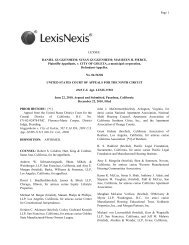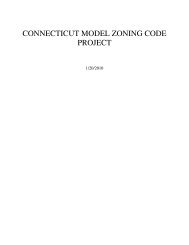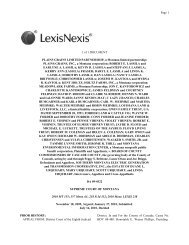Through a Glass Darkly: Measuring Loss Under ... - Land Use Law
Through a Glass Darkly: Measuring Loss Under ... - Land Use Law
Through a Glass Darkly: Measuring Loss Under ... - Land Use Law
Create successful ePaper yourself
Turn your PDF publications into a flip-book with our unique Google optimized e-Paper software.
MEASURING LOSS UNDER MEASURE 37 565<br />
Valuation is an issue of particular ambiguity—and, hence, controversy—<br />
within Measure 37. The Measure says very little on the subject<br />
(aside from creating a statutory right to “just compensation” if the fair<br />
market value of land is devalued by a land use regulation). 9 Its discussion<br />
of valuation is largely confined to the following statement found in<br />
subsection (2):<br />
Just compensation shall be equal to the reduction in the fair market value of the<br />
affected property interest resulting from enactment or enforcement of the land use<br />
regulation as of the date the owner makes written demand for compensation under<br />
this section. 10<br />
In eminent domain law the words “just compensation” mean the price<br />
a willing buyer would pay for land from a willing seller with both parties<br />
having knowledge of the marketplace. 11 Measure 37, however, uses<br />
this eminent domain term to establish the obligation of a public body to<br />
pay for regulation, even though that public body is not seeking to acquire<br />
property for public use, as it would be under eminent domain law. 12<br />
Indeed, the appearance of these words in the ballot title and caption may<br />
well have been a significant reason for the passage of the Measure.<br />
However, it should not be assumed that the valuation methodology utilized<br />
in eminent domain law can be transposed to Measure 37 claims.<br />
Nor should it be assumed that the valuation methodologies ought to be<br />
analogous: the correct valuation methodology for Measure 37 claims is<br />
a normative question, which calls for an in-depth analysis of the text,<br />
context, and legislative history of the measure, as well as a critical<br />
review of the economic arguments.<br />
This article is divided into six parts. Following this introduction,<br />
Section II discusses the structure of the Measure itself and current<br />
practice in administering Measure 37 claims. Section III illustrates the<br />
importance of assessing the exact quantification of the alleged loss in<br />
each Measure 37 claim, prior to any decision whether to pay or waive<br />
on behalf of the local governments. Section IV provides a review and<br />
critical analysis of proposed valuation methods. Section V assesses<br />
each of the valuation methodologies against the text, context, and legislative<br />
history of Measure 37 to determine its legal validity. Finally,<br />
the best of these valuation methods is selected and explained in terms<br />
of the Measure.<br />
9. OR. REV. STAT. § 197.352(1) (2005).<br />
10. Id. § 197.352(2).<br />
11. See, e.g., State v. Lundberg, 825 P.2d 641, 644–45 (Or. 1992).<br />
12. See, e.g., OR. REV. STAT. § 197.352(1)–(2).<br />
ABA-TUL-07-0701-Sullivan.indd 565<br />
9/18/07 10:43:37 AM







